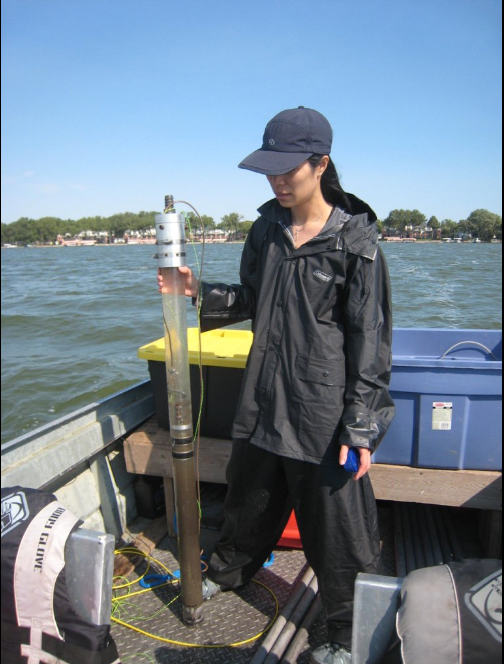
Story submitted by Dr. Elizabeth Swanner, Assistant Professor in the Geological and Atmospheric Sciences at ISU and a 2016 recipient of an Iowa Water Center Research Grant.
Over September 9-13, our new ISU PhD student Tania Leung and I traveled to northwest Iowa to the Lakeside Laboratory. Our goals at Lakeside were twofold:
- to collect preliminary data on our Iowa Water Center funded project in order to plan our field campaign for summer 2017, and
- to participate in the Phycological Research Consortium (PRC).
Our research will use deep West Lake Okoboji and shallow East Lake Okoboji to evaluate the potential that iron is released out of lake sediments, stimulating the blooming of toxic cyanobacteria in Iowa’s lakes during the summers. These harmful algal blooms (HABs) continue to increase, which threaten the safety of Iowa’s surface water for drinking and recreation.
The Phycological Research Consortium is a professional and collaborative network that serves as a forum for an exchange of ideas and information in algae. We scheduled our fieldwork with the PRC meeting because Tania and I needed to learn more about traditional microscopic identification of different algal classes for our work – and that is exactly the expertise of phycologists.
During the weekend, we split our time between the lake and the lab. On the water, we collected surface water samples and water samples from depth to analyze for nutrients and iron. A major goal was also to compare the taxonomy and abundance of algae microscopically with a fluorescence instrument we will purchase for the project. The fluorescence instrument can potentially help us screen for algal blooms rapidly, based on the fluorescent properties of algal pigments. This instrument needs to be calibrated to the algal communities expected in our lakes (and this requires microscopic identification). We also pulled up sediment cores to look for iron in the pore waters using a special type of microelectrode.
Back in the lab, we will test whether this iron is released to overlying waters to stimulate HABs. We have a lot of data to process, but I can say we found algae and iron! We are looking forward to the results this project will produce, and to spending more time at Lakeside Laboratory.